Requests for help preparing tax returns are down. From January 1st to March 30th requests to 211s for tax assistance are 12% lower than the same period in 2020.
Why are tax assistance requests lower in 2021?


Requests for help preparing tax returns are down. From January 1st to March 30th requests to 211s for tax assistance are 12% lower than the same period in 2020.
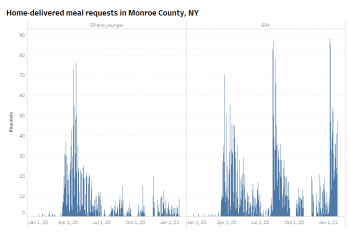
Home-delivered meals for seniors just got a big upgrade. In Rochester, NY, adults 60 and older who could not travel to get food during the pandemic are able to order free meals from selected restaurants in the city.
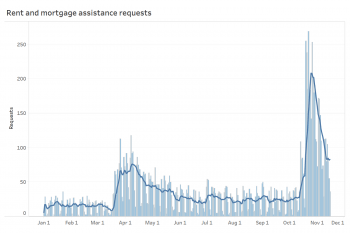
Two powerful forces are driving requests for rent and mortgage assistance to all-time highs in Massachusetts. The peak in mid-October was over 200 requests per day, more than ten times the pre-COVID rate.

Among the many lessons learned about 2-1-1 requests during COVID-19, here’s one of the most important: availability of resources helps reveal community needs.

With 2-1-1 and CARES Act-funded agencies teaming up, rent and mortgage requests in St. Louis are soaring.
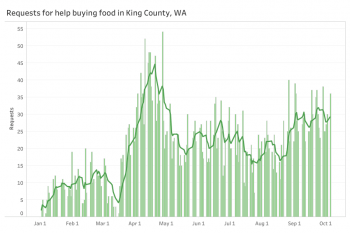
As summer drew to a close and students in King County, Washington prepared to start the school year at home, food needs grew steadily. Up to 30,000 students who would have received free or reduced-price lunches at school would not be receiving them, at least in the usual way.
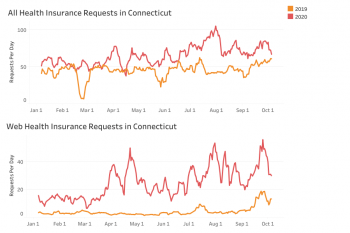
COVID-19 and a slate of creative new state health plans are driving big increases in requests for health insurance in Connecticut. Since the pandemic began, requests to Connecticut 2-1-1 for health insurance are up 48% compared to the same dates in 2019.
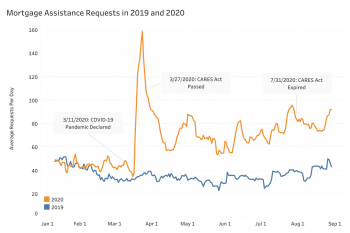
Requests for mortgage payment assistance rose throughout the summer of 2020. We compared requests received by 2-1-1s during the first eight months of 2020 (orange line on the chart) with the same dates in 2019 (blue line). In 2020, requests spiked as the COVID-19 pandemic began in March. At its peak, 2020 rates were over four-fold higher than the same date in 2019.
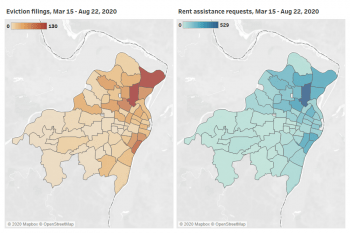
Areas of St. Louis with the greatest rent needs may have something worse coming – eviction. ZIP codes with the most 2-1-1 requests for rent assistance also had the largest number of eviction filings.
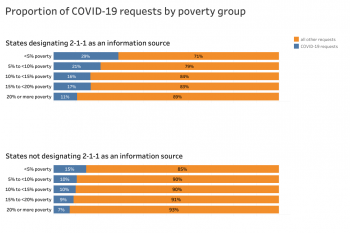
2-1-1s serving as the primary COVID-19 helpline in their service area appear to be reaching a broader cross-section of Americans. One explanation is that by virtue of their increased visibility in responding to COVID-19, 2-1-1s in the former group are reaching a more diverse group of callers, who are – in every poverty-level category – more likely to be seeking COVID-19 information.

Requests for help paying electric bills reached their highest level in St. Louis since March, as Ameren ended its suspension of disconnections.
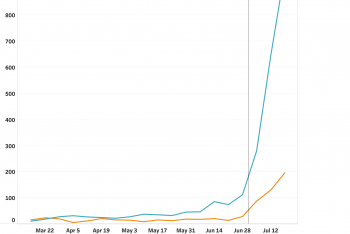
Will it be back-to-school or school-at-home during COVID-19? Data from 2-1-1 helplines suggest many parents have already chosen. One of the most reliable patterns in all 2-1-1 data is that requests for clothing spike each year in July and August as families seek back-to-school clothing for growing kids. But this year, not so much.
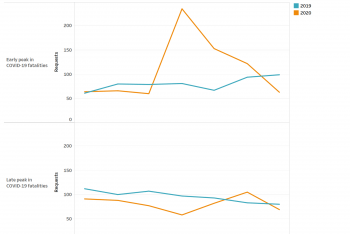
Early in the pandemic, requests to 2-1-1 for help paying for burial and funeral costs rose in states with high COVID-19 death rates. The combination of high COVID-deaths and high funeral costs in a state appear linked to requests to 2-1-1 for help with death-related expenses.
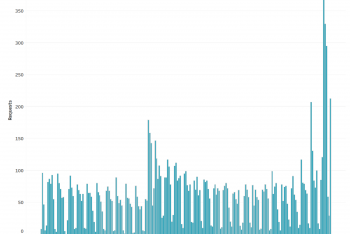
As state protections expire, calls to 2-1-1 for utility payment assistance are surging in North Carolina. With a state moratorium on utility disconnections set to end on July 29th, 2-1-1 has seen a sharp increase in calls for help during the last week.
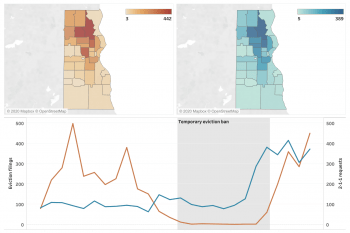
Eviction filings fell to near zero in Milwaukee during its temporary eviction ban in the early months of COVID-19. However, as the ban grew closer to expiring, rent assistance requests to 2-1-1 more than tripled.
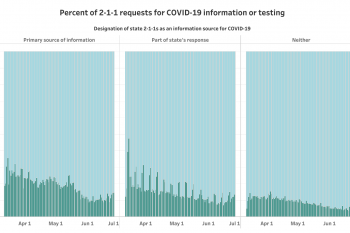
States that are partnering with 2-1-1s in their COVID response are generating more COVID requests to 2-1-1. The charts below show requests for COVID-19 information each day during the pandemic as a proportion of all requests received. In states that partnered with 2-1-1, a larger proportion of requests were COVID-related.
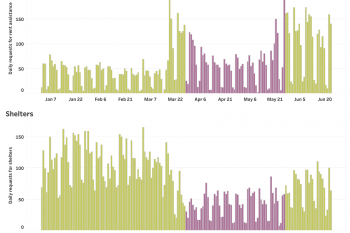
Housing requests to 211 Wisconsin for rent assistance and help finding shelters are rising after a temporary ban on evictions and foreclosures ended. We analyzed 23,802 requests for rent assistance and shelters made to 211 Wisconsin before, during and after the temporary ban.
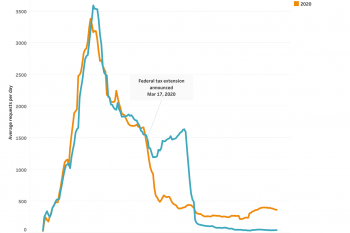
2020 looked like any other year for 2-1-1s helping link callers to tax preparation assistance. Until COVID-19, that is. Less than a week after COVID-19 was declared a pandemic, the Federal Government extended the deadline for filing tax returns until July 15, 2020. As the chart shows, the effect of the federal extension is clear. […]
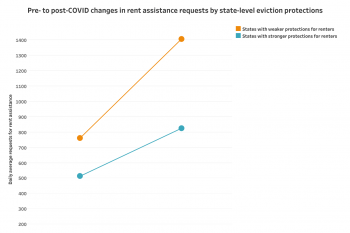
As eviction moratoriums begin to expire, there is a large gap in rent assistance needs between states with stronger and weaker protections for renters.
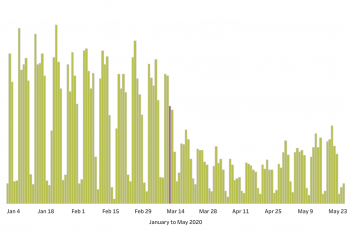
Requests for childcare assistance are on the rise at 2-1-1 helplines. The steady increase in requests for childcare during May coincides with states reopening after COVID-related shutdowns.
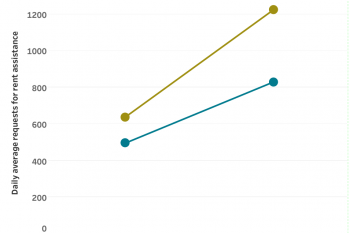
States with weaker protections for renters have seen greater increases in the number of requests to 2-1-1 for rent assistance since COVID.